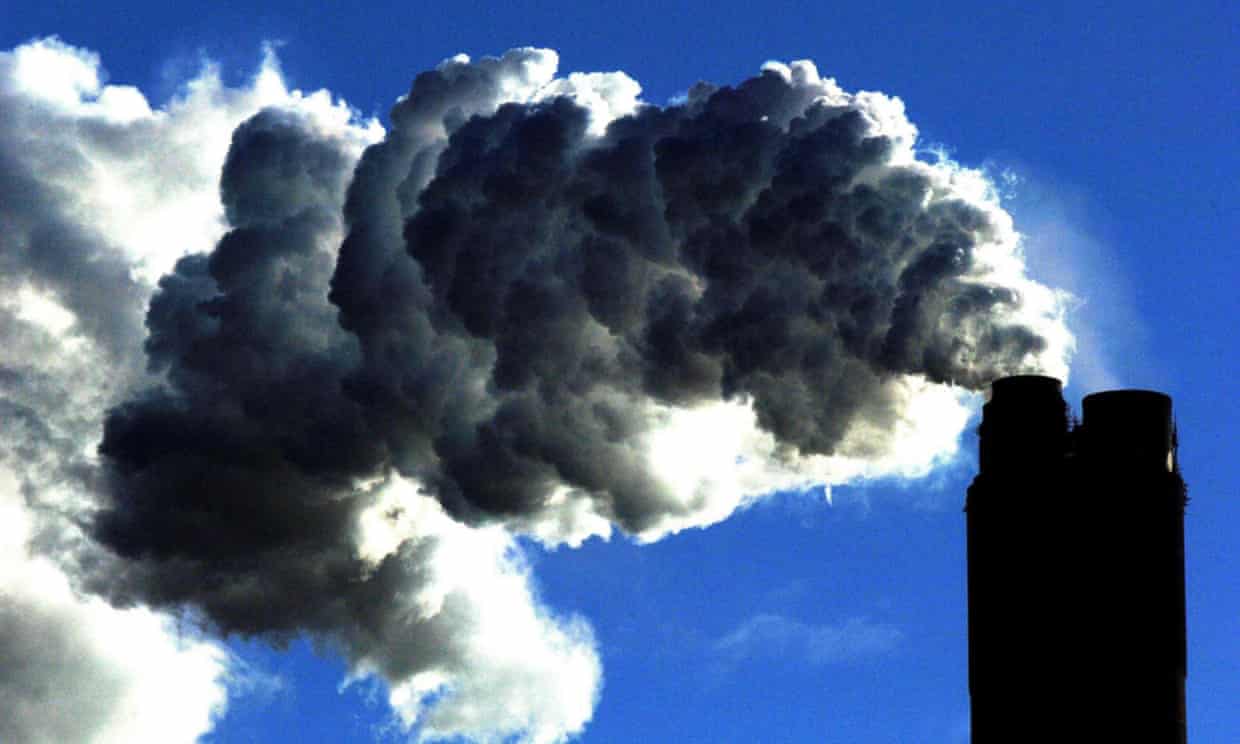
‘We’re going into very new territory’: James Butler, of the US National Oceanographic and Atmospheric Administration, says the amount of carbon dioxide is locking in future warming. Photograph: John Giles/PA
Future in which global concentration of CO2 is permanently above 400 parts per million looms...
The world is hurtling towards an era when global concentrations of carbon dioxide never again dip below the 400 parts per million (ppm) milestone, as two important measuring stations sit on the point of no return.
The news comes as one important atmospheric measuring station at Cape Grim in Australia is poised on the verge of 400ppm for the first time. Sitting in a region with stable CO2 concentrations, once that happens, it will never get a reading below 400ppm.
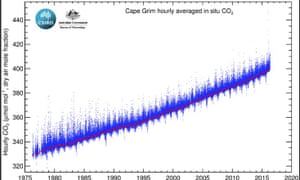
An atmospheric measuring station at Cape Grim in Australia is poised on the verge of 400ppm for the first time. Photograph: CSIRO
Meanwhile another station in the northern hemisphere may have gone above the 400ppm line for the last time, never to dip below it again.
“We’re going into very new territory,” James Butler, director of the global monitoring division at the US National Oceanographic and Atmospheric Administration, told the Guardian.
When enough CO2 is pumped into the atmosphere from burning fossil fuels, the seasonal cycles that drive the concentrations up and down throughout the year will eventually stop dipping the concentration below the 400ppm mark. The 400ppm figure is just symbolic, but it’s psychologically powerful, says Butler.
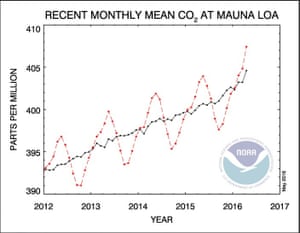
In Hawaii, the Mauna Loa station is sitting above 400 ppm and might never dip below it again. Photograph: National Oceanic and Atmospheric Administration

Six more islands have large swaths of land, and villages, washed into sea as a result of ‘dramatic impact of climate change’ on the Solomon Islands
The first 400ppm milestone was reached in 2013 when a station on the Hawaiian volcano of Mauna Loa first registered a monthly average of 400ppm. But the northern hemisphere has a large seasonal cycle, where it increases in summer but decreases in winter. So each year since it has dipped back below 400ppm.
Then, combining all the global readings, the global monthly average was found to pass 400ppm in March 2015.
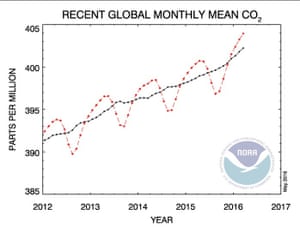
A National Oceanic and Atmospheric Administration graph of global monthly mean carbon dioxide. Photograph: National Oceanic and Atmospheric Administration
In the southern hemisphere, the seasonal cycle is less pronounced and atmospheric levels of CO2 hardly drop, usually just slowing in the southern hemisphere summer months. This week scientists revealed to Fairfax Media that Cape Grim had a reading of 399.9ppm on 6 May. Within weeks it would pop above 400ppm and never return.

Enter your email address below to receive the day’s top election news and commentary coverage. Delivered to your inbox every afternoon
“We wouldn’t have expected to reach the 400ppm mark so early,” said David Etheridge, an atmospheric scientist from the CSIRO, which runs the Cape Grim station. “With El Nino, the ocean essentially caps off it’s ability to take up heat so the concentrations are growing fast as warmer land areas release carbon. So we would have otherwise expected it to happen later in the year.
“No matter what the world’s emissions are now, we can decrease growth but we can’t decrease the concentration.
“Even if we stopped emitting now, we’re committed to a lot of warming.”
Over in Hawaii, the Mauna Loa station, which is the longest-running in the world, is sitting above 400 ppm, and for the first time, might never dip below it again.
“It’s hard to predict,” Butler told the Guardian. “It’s getting real close.”
Meanwhile, the global average, after controlling for the seasonal cycle, popped above 400ppm late last year. Within a couple of years, the seasonal dips will never drop below 400ppm in the global average too.
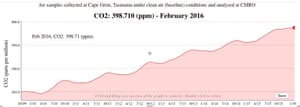
Air samples collected at Cape Grim, Tasmania, Australia, under clean air (baseline) conditions. Photograph: CSIRO
All together, the world is on the verge of no measurements ever showing a reading under 400ppm.
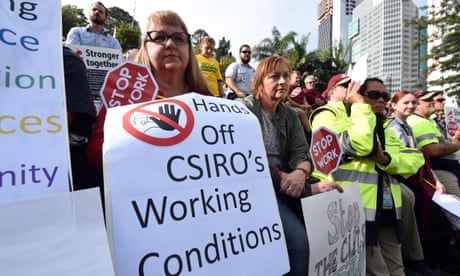
Staff given two weeks to explain why their jobs should be saved, followed by a two-month process in which management tries to find them another role
“There’s an answer to dealing with this and that’s to stop burning fossil fuels,” Butler said.
Butler also emphasised that this CO2 is locking in future warming. “It’s like lying in bed with your electric blanket set to three. You jack it up to seven – you don’t get hot right away but you do get hot. And that’s what we’re doing.”
The CO2 concentrations are driving what appears to be runaway climate change around the world.
This year has seen record hot global ocean temperatures, which have caused coral reefs all around the world to bleach and devastated Australia’s Great Barrier Reef.
Air surface temperatures have also been shocking climate scientists. Yearly and monthly temperature records have been breaking regularly, with many of the records being broken by the biggest margins ever seen.
“It’s pretty ugly when you look at it,” Butler said.
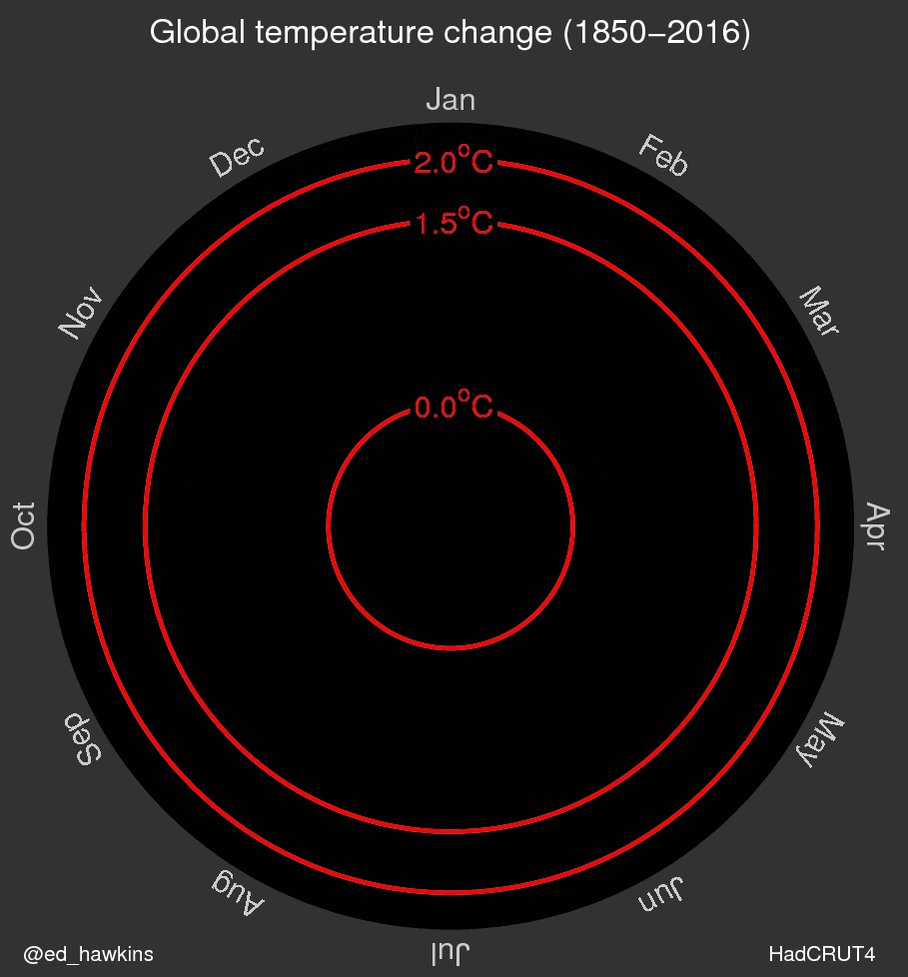 — Ed Hawkins (@ed_hawkins) May 9, 2016
— Ed Hawkins (@ed_hawkins) May 9, 2016
Spiralling global temperatures from 1850-2016 (full animation) https://t.co/YETC5HkmTr pic.twitter.com/Ypci717AHq
Wednesday 11 May 2016 04.11 EDT
source: http://www.theguardian.com/us
original story HERE.
To help do something about the climate change and global warming emergency, click here.
Sign up for our free Global Warming Blog by clicking here. (In your email, you will receive critical news, research, and the warning signs for the next global warming disaster.)
To share this blog post: Go to the Share button to the left below.

Be the first to comment
Sign in with